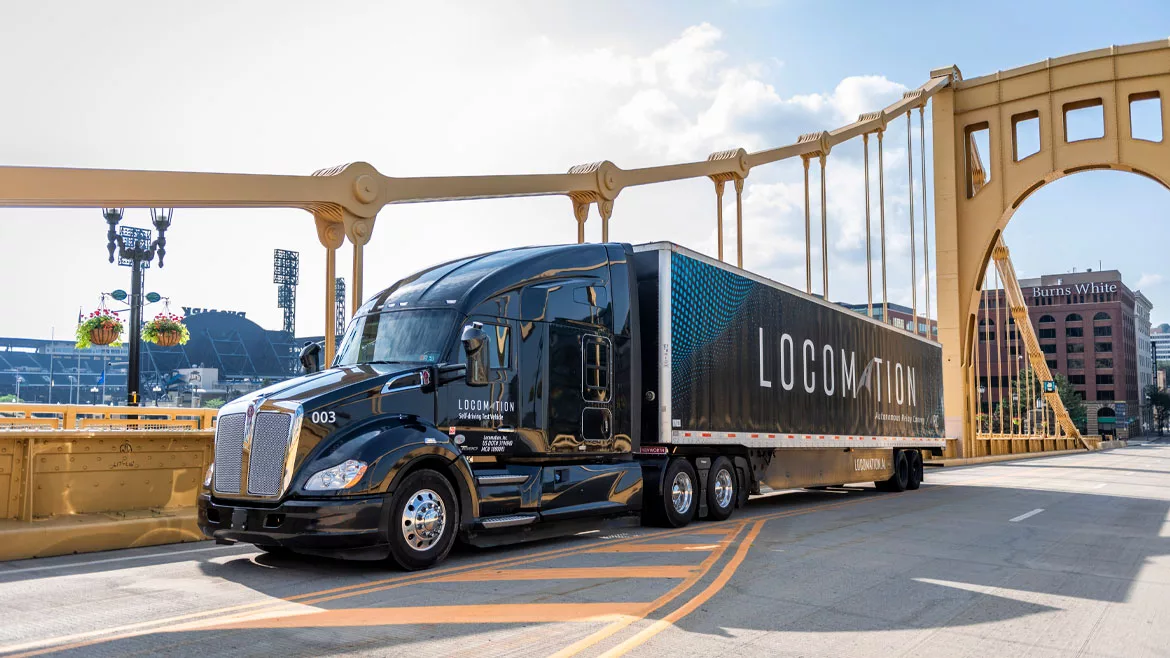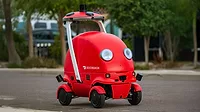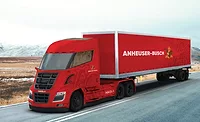Distribution
Autonomous vehicles fleets are the future, and the future is getting closer
Autonomous food, beverage delivery will be among the fastest growing sectors, second only to retail, report shows

Photo courtesy of Locomation
The robots aren’t anywhere near ready to take over, but year by year, we creep ever so closer to an at-least partially driverless future.
At the end of last year the global autonomous last-mile delivery market was expected to reach a total value of nearly $13 billion. By 2030, that number is expected to increase more than seven-fold to $90.21 billion, according to a report titled “2022 Autonomous Last Mile Delivery Market,” published by Allied Market Research. The report projects that North America will be the most lucrative region as autonomous vehicle adoption ramps up through the rest of this decade. Autonomous food and beverage delivery will be among the fastest growing sectors, second only to retail.
During the past year, there have been a number of developments on the autonomous vehicle front from some of the emerging equipment suppliers in the space.

TuSimple
In July, TuSimple, a San Diego, Calif.-based autonomous driving company, announced a partnership with Hegelmann Group, a major European transport and logistics provider. Hegelmann plans to equip a North American fleet of purpose-built autonomous International trucks with TuSimple’s advanced autonomous driving systems. The system will be based on a global vehicle platform developed by Navistar. TuSimple also is behind the nation’s first fully automated trucking lane, which is expected to achieve full commercial viability by the end of 2023.
Kodiak
Kodiak recently announced its fourth-generation (Gen4) autonomous truck, which, the company says, integrates an optimized suite of proven, truck-ready technology and is a culmination of its work with partners such as Cummins, Bridgestone Americas, Luminar, Hesai Technologies and others. Kodiak has developed a hardware system it has dubbed SensorPods, which replace a truck’s stock side-view mirrors and house the sensors necessary for operation. The SensorPods significantly reduce the maintenance time typically required for such systems, and can be changed without specialized training or equipment, allowing for quick and easy service at any time and location — including out on the road, the company says. SensorPods come pre-built, pre-calibrated and changing the SensorPods is as easy as (and faster than), changing a tier, it adds.
Locomation
Late last year, Pittsburgh, Pa.-based autonomous vehicle solution provider Locomation announced a comprehensive collaboration with Cummins for joint testing and integration of Cummins powertrain systems in trucks equipped with Locomation’s autonomous technology. When integrated with the firmware running on the powertrain system, Locomation’s autonomous operation software will enable more precise powertrain control, which, Locomation says, will result in greater fuel efficiency and reduced carbon emissions. The company projects that the integrated Locomation-Cummins system could reduce fuel consumption by 10% for each vehicle.
In April, Locomation released a projections analysis that demonstrated a significant reduction in carbon dioxide emissions. If autonomous vehicle adoption continues on its current track, the report projected that, by 2030, the emissions savings achieved would be the equivalent of that emitted from 2 million passenger vehicles.
Aurora Innovation
Aurora Innovation released an update in the second quarter of this year that enables its Aurora Driver system to detect and safely respond to issues on the road without the aid of a vehicle operator. Its Fault Management System is able to detect problems and safely pull the vehicle over to the side of the road without any human involvement. The Fault Management System is designed to actively monitor the vehicle’s health — everything from the self-driving software and sensors to the on-board computer, the company says. When an issue is detected, the system will navigate the truck to a safe place to stop where the problem can be rectified, it adds. During tests, engineers created artificial issues, to which the Aurora system responded by activating the vehicle’s hazard lights, reducing speed and, ultimately, pulling over to a full stop on the side of the road.
Looking for a reprint of this article?
From high-res PDFs to custom plaques, order your copy today!






